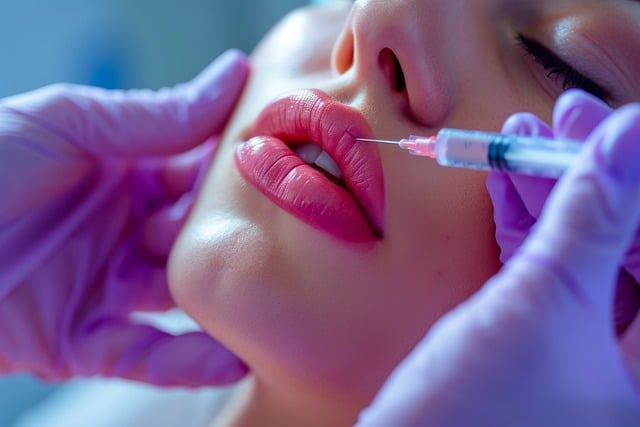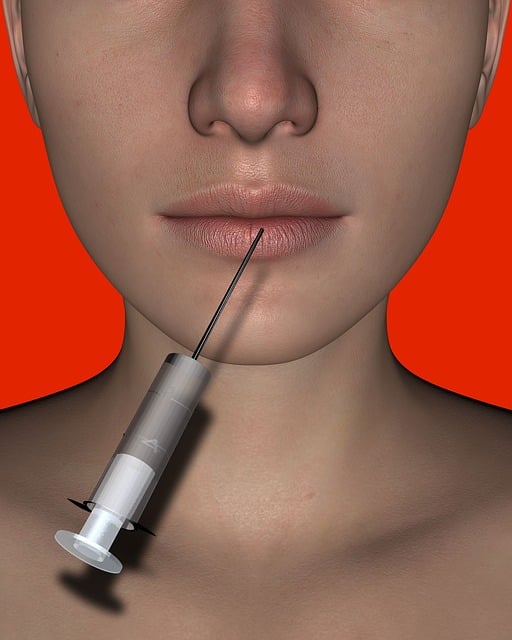Botox and dermal fillers offer distinct anti-aging solutions. Botox, a muscle relaxant derived from bacteria, prevents dynamic wrinkles by blocking nerve signals, ideal for expression lines around eyes and forehead. Dermal fillers, made from substances like hyaluronic acid or collagen, add volume immediately to reduce static wrinkles, enhancing facial contours and skin texture. Choosing between them depends on personal preference and desired outcome: Botox provides subtle, natural results lasting 3-6 months, while dermal fillers offer quicker, noticeable effects but temporary. Both carry risks; ensure safety by consulting a qualified practitioner, disclosing medical history, and using FDA-approved products with regular post-procedure follow-ups.
“Uncover the world of aesthetic treatments with our comprehensive guide to Safe Preventative Botox and its comparison with Dermal Fillers. Understanding the nuances between these popular anti-aging solutions is key to making informed decisions. Learn about the science behind Botox’s preventative effects, dispel common safety misconceptions, and explore expert tips for choosing the right treatment—Botox or Dermal Fillers—to enhance your natural beauty. Dive into this essential resource to navigate the world of skincare with confidence.”
Understanding Botox and Dermal Fillers: Unveiling the Differences

Botox and dermal fillers are both popular cosmetic treatments, but they serve different purposes. Botox, a type of protein derived from bacteria, is primarily used to relax muscles and prevent dynamic wrinkles from forming, especially around the eyes and forehead. It’s a preventative measure that works by blocking nerve signals that cause muscle contraction.
Dermal fillers, on the other hand, are made from substances like hyaluronic acid or collagen and are injected into the skin to add volume and reduce the appearance of static wrinkles. They provide immediate results and can enhance facial contours, improve skin texture, and give a more youthful appearance. Understanding these differences is crucial when considering which treatment aligns best with your goals and needs for safe, preventative skincare.
Safe Preventative Botox: A Comprehensive Guide

Safe Preventative Botox offers a non-invasive approach to anti-aging, focusing on preventing wrinkles from forming rather than treating existing ones. This differs significantly from dermal fillers, which plump and enhance specific areas by injecting substances like hyaluronic acid into the skin. Botox vs Dermal Fillers: While both aim for youthful-looking skin, their methods and effects vary greatly.
Botox blocks nerve signals to muscles, preventing them from contracting and causing wrinkles. It’s ideal for preventing frown lines, crow’s feet, and other expression lines. In contrast, dermal fillers add volume by filling in deep wrinkles and enhancing facial contours. Each has its advantages; Botox provides a more subtle, natural result, while fillers offer quicker, noticeable changes. Choosing between them depends on individual preferences and desired outcomes.
Common Misconceptions About Botox Safety

Many people have misconceptions about the safety of Botox, often comparing it to dermal fillers. One common misunderstanding is that Botox is risky and carries more potential side effects than its alternatives. However, this isn’t entirely true. While all cosmetic procedures carry some risks, Botox is generally considered safe when administered by a qualified professional. The focus should be on choosing an experienced practitioner who follows proper safety protocols.
Another misconception is that Botox is only for anti-aging purposes. While it’s true that many people use it to reduce the appearance of wrinkles, Botox also has medical applications like treating chronic migraines and overactive bladders. Unlike dermal fillers, which can cause issues if injected improperly, Botox has a well-understood mechanism of action, making it safer in terms of placement and dosage when used therapeutically.
The Science Behind Botox's Preventative Effects

The science behind Botox’s preventative effects is rooted in its ability to temporarily paralyze muscles, reducing dynamic wrinkle formation. Unlike dermal fillers that simply plump and fill, Botox works by inhibiting nerve signals that cause muscle contraction, effectively preventing deep lines and wrinkles from forming or worsening over time. This proactive approach makes it a popular choice for those seeking to maintain youthful-looking skin without invasive procedures.
In comparison to dermal fillers, which provide immediate results but may require frequent touch-ups, Botox offers a longer-lasting solution with results typically lasting 3-6 months. While both treatments have their merits, Botox’s preventative qualities make it an appealing option for individuals looking to slow down the aging process and preserve their natural beauty.
Choosing the Right Treatment: Botox vs Dermal Fillers for You

When considering preventative measures against ageing, the choice between Botox and dermal fillers can be daunting. Both are popular treatments for smoothing fine lines and wrinkles, but they work in different ways and suit different needs.
Botox is a neurotoxin that relaxes muscles, preventing them from contracting and causing dynamic wrinkles. It’s ideal for people who want to prevent the formation of expression lines or soften existing ones, especially around the eyes and forehead. Dermal fillers, on the other hand, add volume and hydration to the skin by filling in wrinkles and creases. They’re a great option for those looking to achieve a more youthful appearance by enhancing specific areas, such as the cheeks or jawline. The choice ultimately depends on your specific concerns and goals, with Botox focusing on muscle relaxation and filler treatments adding structural support to the skin.
Expert Tips for Minimizing Risks and Maximizing Results

When considering cosmetic procedures like Botox or dermal fillers, understanding potential risks and benefits is crucial. While both injectables offer significant advantages in smoothing fine lines and enhancing facial features, they cater to different needs. Botox excels in relaxing muscles to prevent dynamic wrinkle formation, ideal for crow’s feet and frown lines. Dermal fillers, on the other hand, add volume and shape, addressing deep wrinkles and enhancing overall facial structure.
To minimize risks with Botox, opt for a qualified, experienced practitioner who can administer the treatment accurately. Always discuss your medical history, as certain conditions may contraindicate Botox use. When choosing dermal fillers, select FDA-approved products from reputable manufacturers to ensure safety and efficacy. Regular consultations post-procedure are essential to monitor results and address any concerns promptly, ensuring both maximum benefits and minimal risks from these non-invasive cosmetic treatments.
